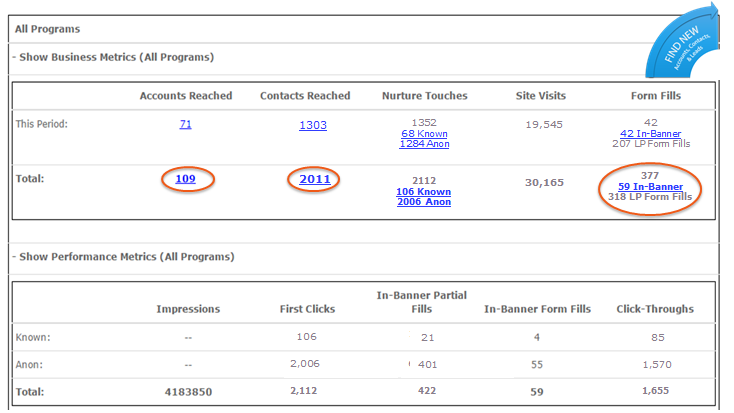
In this post, we start with a basic overview, ‘What is Site Retargeting?’. We then cover “table stakes” – the must-dos for planning & launching any site retargeting program. We wrap up by covering what smarter B2B marketers are doing today to make the most of their active site retargeting campaigns – finding new accounts, contacts and leads through site retargeting, driving higher engagement with personalization rules, and accelerating their pipeline as a result.
1. What is Site Retargeting?
Site retargeting is a display marketing strategy that allows you to re-engage the 95% of site visitors who leave your site without filling out a form through display, to convert more visitors who have already expressed interest in your brand. With this strategy, visitors to your website are tagged with a retargeting cookie when they visit your site. They are then served your ads throughout the web as they browse the internet, leading to increased, cost-effective top-of-funnel lead conversions.
2. Site Retargeting – Must-Dos
2.1 Understand your audience segments

Site retargeting is a great way to target ads to your existing audience, but it’s important to understand just *who* that audience is made up of. Do you sell multiple products that appeal to different user bases? Do you have pages that are catered to different geographic regions or industries? If so, segmentation will be crucial to your campaign’s success.
Some key things to keep in mind when segmenting your audience:
- Know your site traffic. Find out how many unique visitors (UVs) you have to your page or subpages before planning your segments. This will save you a lot of headache.
- Keep your segments large (Kwanzoo recommends a minimum of 40k per segment). If you break your audience down too much, you will end up wasting effort on planning as well as media budget.
2.2 Focus on your ad offers, copy, and messaging by audience segment
 Once you have defined your site retargeting segments, the next important step is determining your ad offers, copy, and messaging for each segment.
Once you have defined your site retargeting segments, the next important step is determining your ad offers, copy, and messaging for each segment.
Some key things to consider:
- Use past offers that have been successful to guide your creative process, and save time on future learnings.
- Leverage your campaign goals (ie brand awareness & nurture vs conversions) to guide your offers. The first goals are better suited to value statements or offers redirecting visitors back to your site, while the second lends itself more to concrete offers using in-banner lead forms or forms in the landing page, such as whitepapers and webinars.
2.3 Have a clear execution plan with controls to deliver the right number of ads by segment, frequency and more.

Make sure that your RTB or ad serving network supports fine-tuned controls such as dayparting, ad serving frequency, and # of ad impressions by segment (not sure what these are? Check out our AdTech Glossary).
Some key things to consider:
- Frequency capping — cap impressions per user at a frequency between 20 and 30 impressions/month for B2B.
- Geographic restrictions — make sure that you can exclude any unwanted geographic regions from your campaign, or restrict your campaign to target geos, as needed.
- Dayparting – if necessary, make sure your DSP allows you to restrict ad serving by day or time-of-day
3. Site Retargeting for B2B: It’s Time to Go Way Beyond Clicks!
Reporting – make sure you can gather data on accounts, contacts and not just clicks.
 It goes without saying that good reporting is key to understanding and optimizing your campaign. As a baseline, you should have constant access to your campaign performance statistics in real time.
It goes without saying that good reporting is key to understanding and optimizing your campaign. As a baseline, you should have constant access to your campaign performance statistics in real time.
However, in today’s AdTech world, basic performance metrics such as engagements and impressions served are not enough on their own. For the full picture, you should try to find a platform that gives you access to business and ad activity metrics such as accounts reached, contacts reached by account, and budget figures by campaign and creative.
Kwanzoo Business and Performance Metrics
Kwanzoo Ad Activity – Anonymous Users
Interested in planning your own site retargeting campaign? Download the Kwanzoo ROI and Budget Modeler to see all-inclusive costs and a budget breakdown for your own site retargeting campaign.


